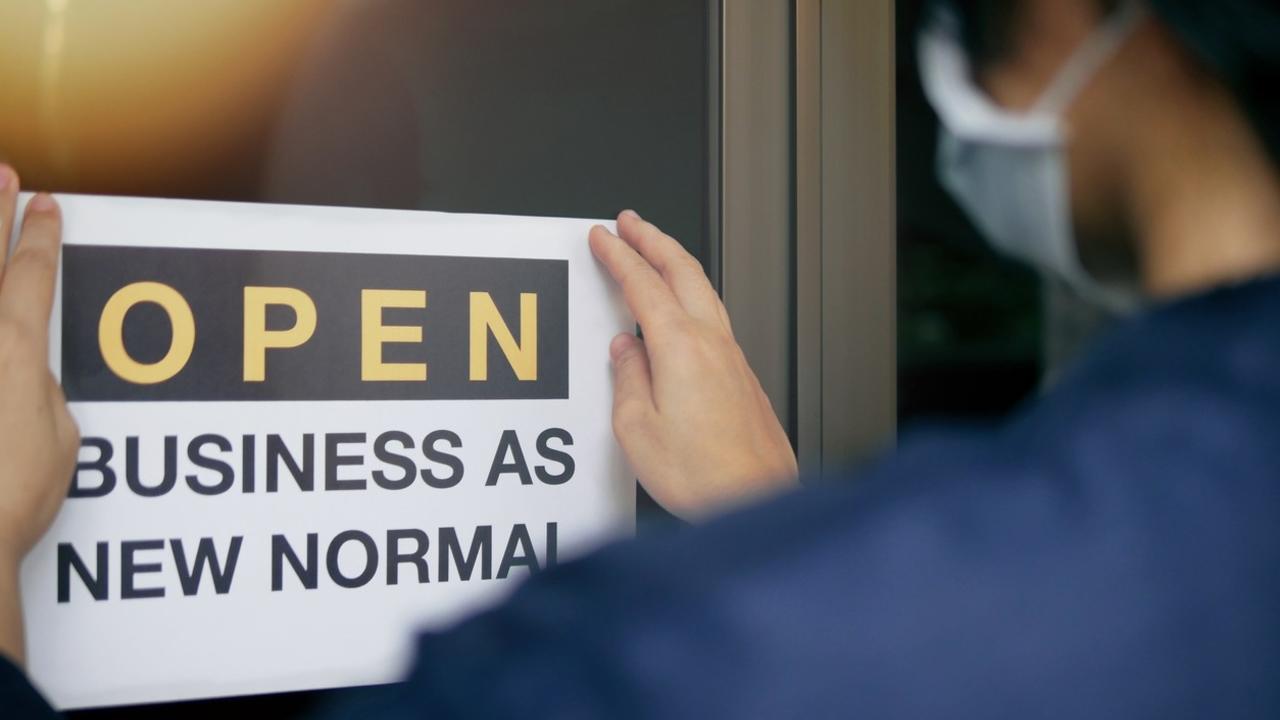Why Getting Back to Normal Shouldn't Be Your Goal
Jun 18, 2020
You’ve probably heard it said—or even said it yourself: “When business goes back to normal, then…” Ahh, yes, normal. The days when you didn’t need a face mask to go grocery shopping. The days when you could have meetings in person. The days before COVID-19.
It’s easy to look back with a nostalgic longing for those days. We all wish we had a magic eraser wand and could set the clock back to February. But of course, we can’t.
In fact, we shouldn’t.
(Quick caveat: of course longing for the economy or unemployment numbers to recover is a good and reasonable desire. As a fellow business owner, I wish for this too. But, there are some dangers to this "rear-view" perspective.)
The Danger of Nostalgic Longing
There are two problems with wishing everything could “go back to normal”.
1. It's just not realistic yet.
As much as we may wish, we're just not out of the woods yet. Even as states begin to lift stay at home orders, public health officials are debating if and when there will be "a second wave". Just this week, Beijing went into a second round of lockdown measures after reporting a new Coronavirus outbreak.
What that means is we have to keep focused. As small business owners, we can't get caught up wishing for the days pre-COVID-19 when we aren't even post-COVID-19.
2. You'll miss what's happening right now.
Longing for what was just creates a sense of perpetual dissatisfaction with what is. Getting caught in nostalgia is like walking backward. You miss all the opportunities ahead of you, but you never get closer to your vision.
And that’s why we must come to terms with the "new normal.”
Welcome to the “New Normal”
It’s been hard to know what exactly the "new normal” would look like. But now, almost four months in, there are some realities that have settled in. And while the pandemic has affected businesses differently, these realities are pretty true across the board.
Reality #1: There is a lot less face-to-face communication.
Zoom's first-quarter profit jumped from $198,000 in 2019 to $27m in 2020. Even as things open up, it will be a long time before people don’t think twice about meeting in person and shaking hands.
The Opportunity: Improved sales productivity and speed of closing. In our B2B world where so many deals are closed through traveling sales reps and back-and-forth meetings, virtual communication saves everyone time. There is a new possibility of covering more ground than ever before because you're not expected to conduct business face-to-face.
Reality #2: Buyers will have constrained budgets.
Because of the nature of our “domino-effect” global economy, supply chain disruptions affect everyone. And with the global economy projected to shrink by 5.2% in 2020, your buyers are going to be more hesitant and more tightfisted on budget.
The Opportunity: Buyers will race to spend on things that up their survivability, margins, and productivity. This means that you have to get smarter in how you pivot and present your offering. If you sell something that can be shown to have a financial ROI, you are in the game.
Reality #3: Everyone is still stressed.
As small business owners, we know that business is personal. Your business is more than just your livelihood, it can be your identity too. If you're in the B2B world, this applies to your customers too. It's hard to think straight when you're in crisis.
The Opportunity: You can connect to your buyers on a new level. Ask how they’re doing and look for opportunities to relieve stress. Instead of a four-point agenda, think about one key point you want to talk about to move the ball forward—and stick to that. Being a source of calm will build up your relational capital and increase customer loyalty.
Seizing Opportunities in the Now
“Seeing the opportunity in the chaos,” as Lancaster Products’ CEO, Curt Snyder put it, “is the mark of a leader whose head is in the game.” For many businesses, short-term pivots could mean long-term survival.
Restaurants have converted outdoor dining spaces into pop-up grocery stores, added a side of toilet paper to your delivery, created innovative drive-thrus, and offered meal kits instead of finished meals. Canlis, a fine dining restaurant in Seattle, began a breakfast menu via drive-thru and sold 500 bagels in 90 minutes.
Some B2B businesses have innovated their business model by partially converting to a D2C or B2C model or ramping up their e-commerce channels. Sinead Scrivener, Operations Director at Fastparts, an agricultural machinery parts distributor, says "our web store has been a big help already in [keeping business operating as normal], and I’m sure it will continue to be."
When we look back at these times 5 years from now, the companies that will still be standing and thriving will be those that embraced the moment—instead of waiting for business to go back to normal.
What You Can Do
Your job as a business owner and leader is to model the mindset of possibilities. If you can't open yourself to the new realities facing you, your team won't either. So, I want to challenge you to write down five “new realities” that actually present you with new opportunities.
And then ask yourself these questions:
- What operational or sales processes do you need to adapt to capitalize on these new opportunities?
- What personnel changes or new skills do you need to invest in to support your team?
- What mindsets do you have to shift on your team to help them identify opportunity gaps and rise to meet them?
Instead of looking in your rear-view mirror, look forward, and see the net positive possibilities in front of you. I don't want to be Pollyanna about this. These changes that we are all experiencing are severe, painful, and unsettling.
Nonetheless, don't live in the past. Build on your past.


